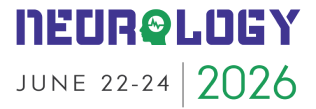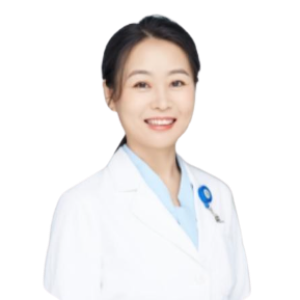Title : Sleep medicine: Modern medical research and acupuncture therapy
Abstract:
Objective: Chronic insomnia disorder (CID) affects people's daytime function and is also a risk factor for many diseases. Targeted drugs have obvious side effects. The therapeutic effect of acupuncture on CID has been confirmed by clinical studies, but there is still a lack of objective data verification.
Methods: Based on subjective-objective methods (PSQI-actigraph), we first conducted an observational study included 217 patients with CID and the clinical characteristics and the factors that aggravate CID were analyzed (study 1). We then performed an intervention study to observe the therapeutic effects of acupuncture on 61 patients with CID (study 2).
Results: Study 1 showed the male : female ratio was nearly 1:2 and patients with underlying diseases, depression and anxiety accounted for 26.7%, 39.2% and 37.3, respectively. Symptom-based stratification (severe CID: PSQI>7 but ≤14; mild CID: PSQI≥15) from subjective results showed the age of severe CID group was significantly older than those in mild CID group (P=0.000), and the ratio of male to female was around 1:1.6-2. Sub-items of PSQI scale including sleep quality, sleep latency, sleep duration, sleep efficiency, sleep disorders, hypnotic drug usage and daytime dysfunction in severe CID group were more severe than those in mild CID group (P=0.000 or 0.002); binary logistic regression results indicated sleep quality (OR: 50.635; 95%CI: 9.078-264.102, P=0.000), sleep duration (OR: 6.747; 95%CI: 2.365-19.249, P=0.000), sleep efficiency (OR: 10.336; 95%CI: 2.899-38.865, P=0.000), hypnotic drugs (OR: 16.056; 95%CI: 5.7- 45.229, P=0.000) and daytime dysfunction (OR: 27.643; 95%CI: 7.576-100.857, P=0.000) were the related factors of CID symptom aggravation. Age-based stratification showed the younger (16-44y) had lower sleep efficiency (P=0.015) and shorter sleep duration (P=0.001). Gender-based stratification showed females had longer sleep duration than males (P=0.049). The objective results from actigraph showed the difference in the number of movement during sleep (P=0.014), wake after sleep onset (P=0.009) and number of awakenings (P=0.001) of the older group (≥45y) when compared with the younger group. The sleep duration (P= 0.048) and total time in bed (P=0.02) of females were significantly longer than those of males. Study 2 showed acupuncture significantly improved sleep quality (P=0.000), sleep duration (P=0.000), sleep efficiency (P=0.000), sleep disorders (P=0.001), hypnotic drug usage (P=0.002) and daytime dysfunction (P=0.003) in patients with CID. Results from actigraph indicated acupuncture significantly improved sleep efficiency (P=0.042), fragmentation index (P=0.009) and sleep fragmentation (P=0.03) in patients with CID.
Conclusion: There were age and sex differences in the incidence of CID. Acupuncture can significantly improve various symptoms of patients with CID. In the future, more attention should be paid to the stratified efficacy and mechanism of acupuncture intervention on CID, so as to better promote the clinical application of acupuncture intervention in CID.
Audience Take Away
- Explain how the audience will be able to use what they learn?
- In terms of age, although the physiology of sleep changes with aging, insomnia that impairing daytime functions (including work ability, daily life, etc.) deserves attention and early intervention.
- In terms of gender, despite the widespread concern about sleep quality from all human beings, women seem to pay more attention to the duration of sleep they get, which is related to the physiological processes they go through during their lifetime (menstruation, pregnancy, menopause, etc.). Therefore, paying attention to women's sleep health during special periods may help them manage their physical and mental health.
- The side effects of conventional hypnotic drugs cannot be ignored, while the CBT-I strategy, a first-line therapy of insomina, faces the challenge of popularization. In contrast, acupuncture has unique advantages in the treatment of insomnia. It can not only improve various symptoms of insomnia effectively, but also has a good effect on the comorbid health problems accompanied by insomnia due to its attribution of multisystem regulation. In addition, acupuncture has been confirmed safe, convenient and economical, which is a superior selection for patients with insomnia. However, due to the challenge of research strategy and specific theory of acupuncture itself, more studies with high-quality evidence are needed to promote its clinical application.
- How will this help the audience in their job? Is this research that other faculty could use to expand their research or teaching? Does this provide a practical solution to a problem that could simplify or make a designer’s job more efficient? Will it improve the accuracy of a design, or provide new information to assist in a design problem? List all other benefits.
- The strategy based on the combination of subjective and objective methods on the studies of sleep disorders has long been recommended. Despite the symptoms of CID are not as obvious as other sleep disorders, say, sleep apnea and REM sleep behavior disorder, researchers can also find some indirect evidence from the results obtained from objective technique, such as actigraph and polysomnography). For example, the index of movement during sleep and the movement profile during daytime. Then, is there a possible way to figure out the relations between changes of diurnal movement and the onset and persistence of insomnia and how it can promote the mining of the positive effects exerted from exercise or anything like that? Take it a step further, how does acupuncture alleviate insomnia from the aspect of the regulation of dynamic and static states?
- Polysomnography is a golden standard of objective data obtainment of sleep disorders because of the superiority from multivariate detection. However, it is not that convenient for all scenes. In addition, the avoidance of sleep disturbance caused by the device itself should be noted. Portable devices like actigraph is also recommended to be introduced to sleep disorder-related study despite the functional differences compared to polysomnography. Select an appropriate strategy based on the scientific problem that someone wants to solve can maximize the utilization of a certain device and expounds reasonable explanations. Reasonable research design is of great importance of the study of acupuncture effects and mechanism on insomnia alleviation.
- Population heterogeneity leads to heterogeneity in the presentation of specific diseases. Modern medical studies on the efficacy of certain interventions have moved beyond simply exploring efficiency and tried to focus on individualized treatment. Acupuncture belongs to the system of Chinese Medicine. As early as 2,000 years ago, ancient Chinese realized that the adjustment of the composition of Chinese herbs and acupuncture points can improve the therapeutic effects of the same disease in different people. While subjective results can help indicate the efficacy of an intervention, objective results not only assist in explaining the efficacy of the intervention, but also provide evidence of the mechanism by which the intervention regulate. Therefore, whether the combination of subjective and objective outcome indicators can provide evidence of stratified efficacy and mechanism, especially the syndrome differentiation and treatment of acupuncture, is a superior strategy for further study of individualized treatment. In addition, combined with the theoretical characteristics of Chinese Medicine, the combination of modern stratified analysis and syndrome differentiation will make great contributions to the clinical promotion of acupuncture.




